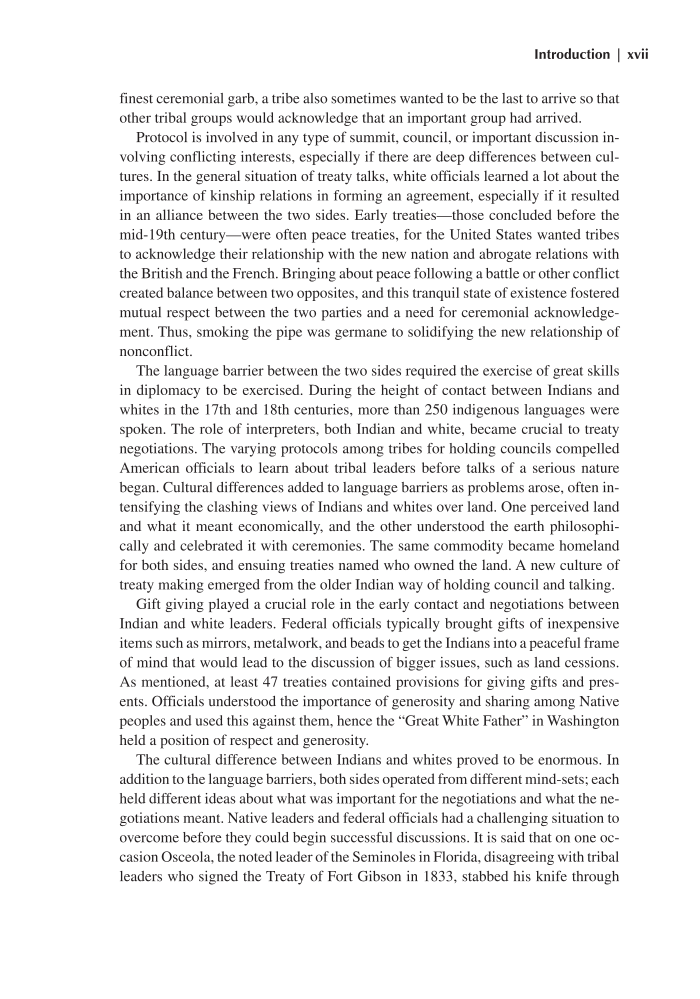Introduction | xvii finest ceremonial garb, a tribe also sometimes wanted to be the last to arrive so that other tribal groups would acknowledge that an important group had arrived. Protocol is involved in any type of summit, council, or important discussion in- volving conflicting interests, especially if there are deep differences between cul- tures. In the general situation of treaty talks, white officials learned a lot about the importance of kinship relations in forming an agreement, especially if it resulted in an alliance between the two sides. Early treaties—those concluded before the mid-19th century—were often peace treaties, for the United States wanted tribes to acknowledge their relationship with the new nation and abrogate relations with the British and the French. Bringing about peace following a battle or other conflict created balance between two opposites, and this tranquil state of existence fostered mutual respect between the two parties and a need for ceremonial acknowledge- ment. Thus, smoking the pipe was germane to solidifying the new relationship of nonconflict. The language barrier between the two sides required the exercise of great skills in diplomacy to be exercised. During the height of contact between Indians and whites in the 17th and 18th centuries, more than 250 indigenous languages were spoken. The role of interpreters, both Indian and white, became crucial to treaty negotiations. The varying protocols among tribes for holding councils compelled American officials to learn about tribal leaders before talks of a serious nature began. Cultural differences added to language barriers as problems arose, often in- tensifying the clashing views of Indians and whites over land. One perceived land and what it meant economically, and the other understood the earth philosophi- cally and celebrated it with ceremonies. The same commodity became homeland for both sides, and ensuing treaties named who owned the land. A new culture of treaty making emerged from the older Indian way of holding council and talking. Gift giving played a crucial role in the early contact and negotiations between Indian and white leaders. Federal officials typically brought gifts of inexpensive items such as mirrors, metalwork, and beads to get the Indians into a peaceful frame of mind that would lead to the discussion of bigger issues, such as land cessions. As mentioned, at least 47 treaties contained provisions for giving gifts and pres- ents. Officials understood the importance of generosity and sharing among Native peoples and used this against them, hence the “Great White Father” in Washington held a position of respect and generosity. The cultural difference between Indians and whites proved to be enormous. In addition to the language barriers, both sides operated from different mind-sets each held different ideas about what was important for the negotiations and what the ne- gotiations meant. Native leaders and federal officials had a challenging situation to overcome before they could begin successful discussions. It is said that on one oc- casion Osceola, the noted leader of the Seminoles in Florida, disagreeing with tribal leaders who signed the Treaty of Fort Gibson in 1833, stabbed his knife through
Document Details My Account Print multiple pages
Print
You have printed 0 times in the last 24 hours.
Your print count will reset on at .
You may print 0 more time(s) before then.
You may print a maximum of 0 pages at a time.




























































































































































































































































































































































































































































